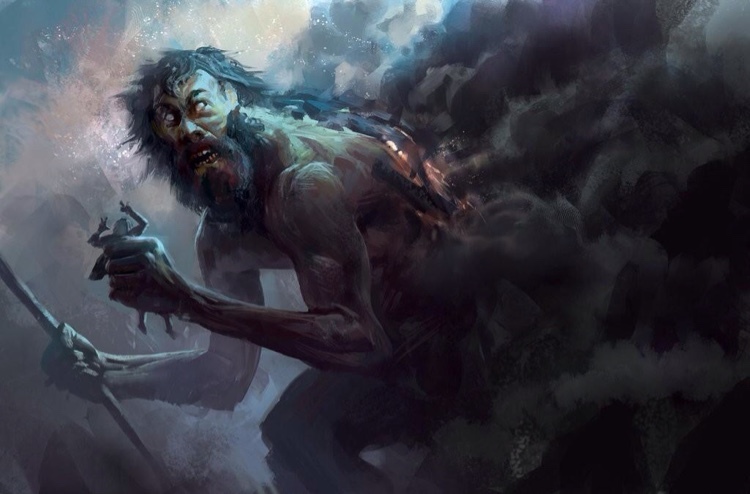The Nine holy nights of the Divine Feminine
Durga is known to be the Goddess of ‘beyond reach’ or ‘inaccessible’. One of the names she is known by is ‘Devi Mahishasuramardini’. This means ‘the Goddess Killer of the Buffalo Demon’. Devotees see her to be gentle & mild and also, frightful & terrible.
Symbolizing victory of positivity over negativity, Navratri literally means 'nine nights' in Sanskrit; Nav - Nine and Ratri - nights. Navaratri is simply the worship of different forms of the cosmic female...divine mother...the source of all...
Day 1:
Shailaputri is worshipped on this day. Goddess Parvati is the daughter of Himalaya, the mountain. In Sanskrit, Shail means the mountain and thus she is also was known as Shailputri. The goddess in this form rides a bull, carrying a Trishul in her right hand and lotus in the left hand.
Day 2:
On Dwitiya, goddess Brahmacharini is worshipped. Here the goddess walks bare feet and a japamala and a kamandalu can be seen in her hands. In this form, Parvati became the great Sati and her unmarried self is worshipped as Brahmacharini.
Day 3:
Goddess Chandraghanta is worshipped on Tritiya. The name derives from the fact that after marrying Lord Shiva she started adorning half Chandra (moon) on her forehead. Here the devi has 10 days and rides a tiger.
Day 4:
On Chaturthi, Devi Kushmanda is worshipped. Also known as the creator of the universe, Kushmanda is also known as the goddess who has the power and capability to reside inside the Sun. Here she has eight hands and sits on a lion.
Day 5:
Goddess Skandamata is worshipped on Panchami. Skandamata or mother of Skanda also known as Lord Kartikeya and rides a ferocious lion along with the baby in one of her hands. The Goddess has four hands.
Day 6:
Devi Katyayini is revered on Shasthi. Known as the warrior goddess, it is considered one of the most violent forms of Goddess Parvati. The name derives as she was born to Rishi (sage) Katya. In this avatar, the Devi rides a lion and has four hands.
Day 7:
On Saptami, Devi Kalaratri is worshipped. Legends go to say she forgo her skin colour and embraces a dark complexion as black to kill demons Shumbha and Nishumbha. Riding a donkey she has four hands here.
Day 8:
Known as Ashtami Mata Mahagauri is worshipped on this day. Mahagauri means extremely white (maha meaning great and gauri meaning white. The name derives from the fact that Parvati had a fair complexion. Here she rides a bull and has four hands.
Day 9:
The last day of the festival also known as Navami, people pray to Devi Siddhidaatri. Sitting on a lotus, she is believed to possess and bestows all type of Siddhis. Here she has four hands.
Dussera is celebrated on the tenth day, it is a day of victory. There are many meanings behind this festival. Even then, it is where good conquered evil.
• Navrati – It was the day that Durga defeated Mahishasura.
• Ramayan – It was the day that Rama won the war with Ravan.
• Mahabharat – It was the end of the Pandav princes exile, where he returned with his weapons to claim his kingdom.
Ayudha Pooja is one of the most significant aspect of Navratri. In Indian culture, we set up this aspect that whatever tool it may be, if you want to use your plough, first bow down to it and then use it. If you want to use a book, first bow down to it and then use it. Ayudha Pooja means, every implement that you use, whether it is in industry, agriculture or anything else, you approach it respectfully.
The books, tools, machines etc are placed respectfully near the devata. After placing the tools in the divine altar or temple, we are made to sit ideal without studies or work for a day. This time is used for spiritual practices like going to temples, individual sadhanas and so on. This is also a time to rethink about the day we started studying or using a tool. The next day morning, the books are taken from the divine altar and the students are asked to read a sentence from a book in mother tongue.
Vidyarambham is an important Hindu tradition that is observed on the ‘Vijayadashami’ day during the Malayalam month of ‘Kanni’. This ceremony is also known as ‘Ezhuthiniruthu’ in the southern states of India like Karnataka and Kerala.
In this ritual young children aged between 3-5 years are introduced to the world of knowledge, music, dance and some forms of folk arts. The observance of Vidyarambham marks the final and tenth day of the Navratri celebrations and is considered to be an auspicious day for initiating the learning process, especially in young children. This ceremony is performed in temples and even few households. The process of initiation and learning is closely linked to the ‘Ayudha Puja’ ritual. According to the beliefs, it is on the day of Vidyarambham that Goddess Saraswati, the Hindu Goddess of knowledge and wisdom, and Gurus or teachers should be presented with ‘Gurudakshina’ as a token for Thanksgiving. Vidyarambham ceremony is very renowned in the ‘Thunchan Parambu Temple’ in Kerala and ‘Kollur Mookambika Temple’ in Karnataka.


















Comments
Post a Comment